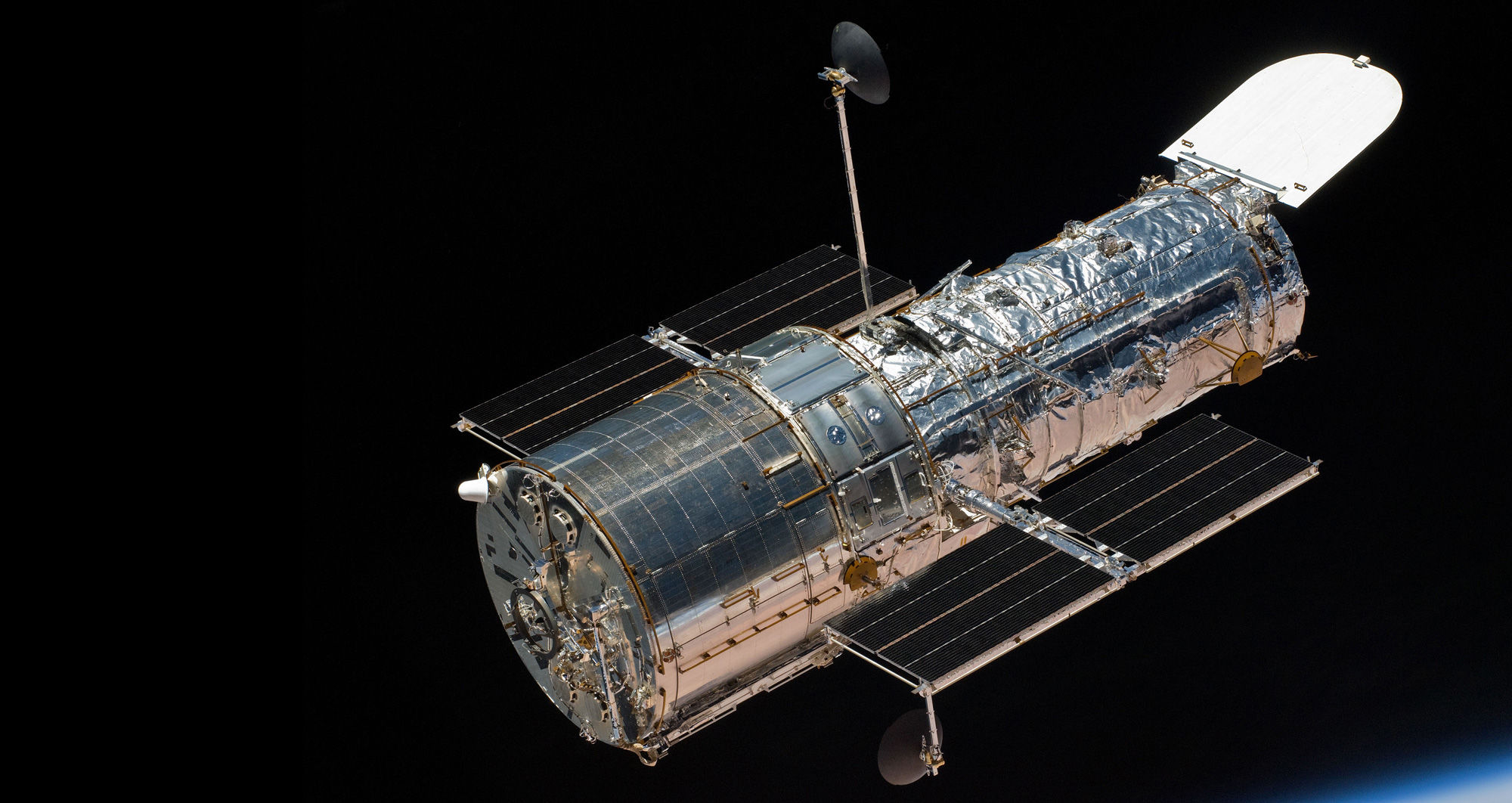Create a free profile to get unlimited access to exclusive videos, sweepstakes, and more!
Hubble trouble: Busted gyro puts telescope in safe mode

During the evening of Friday, October 5, a gyroscope on the Hubble Space Telescope failed. Let me be clear up front: The observatory is not in any physical danger, and all the instruments are OK. While this isn’t life-threatening for Hubble, it’s still pretty bad news, as I’ll explain. For the moment, though, the observatory is in “safe mode” — non-critical functions are shut down, the aperture door has been closed, and it has put itself into a stable configuration until it receives new orders from the ground.
[Update (Oct. 15, 2018): NASA has issued an update. The gyro appears to be spinning properly, but the sensor that reports that rate isn't sending the correct numbers to the ground. In a sense that's good news; the gyro itself is working properly. But the sensor needs to be sending the correct data, or else the gyro cannot be used. Hopefully a workaround or fix will be found soon.]
Hubble is equipped with six gyroscopes that keep it locked on to its targets when it’s observing. In principle they’re like the kids’ toys you’ve likely seen: You take a wheel and spin it extremely rapidly (in the case of Hubble’ gyros, nearly 20,000 revolutions per minute!). Because of the physics of angular momentum, if there’s an external force on the wheel that tries to move it, the wheel resists that motion. By using extremely accurate instruments this force can be detected, measured, and then compensated for, keeping the telescope aimed very accurately.
Each gyro is housed in a Rate Sensor Unit (RSU), and Hubble has three of these, so six gyros are onboard total. In general three are used at any one time (one in each RSU), and the other three held as spares. The three in use are rotating with their axes aimed such that they are at 90° to each other, like the three axes of a Cartesian plot (the x, y, and z directions). This way a deviation in any direction can be detected.
Unfortunately, over time they degrade. The gyros have been replaced three times during servicing missions by the Space Shuttle; four were swapped out in 1993, all six in 1999, and again all six in 2009, when they were given a significant upgrade*.
Usually, a gyro doesn’t just suddenly and catastrophically fail. They start to act erratically over time, sometimes for months before failing. The gyro that failed last week had been giving “end-of-life” signals for a year before giving out, so this wasn’t exactly a surprise. The real problem is that two of the gyros replaced in 2009 had already died, leaving four. With this one gone that leaves three, including one that had been held in reserve.
That’s where the trouble lies. When engineers powered up the third, it didn’t perform up to snuff and can’t be used for normal operations. It’s not clear yet why it’s not working correctly. A team, called the Anomaly Review Board, has been put together to troubleshoot the issue, find a way to resolve it, and suggest a course of action.
If they can’t figure it out, all is still not lost. Hubble can run on two gyros — it did for a while before the 2009 servicing mission — but it’s not ideal. Pointing accuracy suffers, and it can only point at certain parts of the sky. There’s even a one-gyro mode; in fact, if only two remain they’re likely to keep one off as a spare and run in one-gyro mode. That will extend Hubble’s life as long as possible†.
So this is bad news, but hopefully not awful news. Now we just have to wait for an update from NASA. I suggest following them on Twitter, as well as Hubble. I’ll be following the story closely and will update this article as soon as I hear more.
* The upgraded gyros use compressed nitrogen gas to deliver the fluid needed to suspend the gyros in the RSUs. In the older version oxygen was used, but that corroded wires, causing the gyros to fail relatively quickly. The latest set of gyros with the better delivery system have been in operation for over nine years now.
† Once that last one gives up the ghost the telescope can no longer track accurately. In that case, it’ll go into safe mode and likely will never come out, at least, not until we have easier access for astronauts into space… which has its own issues; we don’t have that right now, plus a servicing mission needs tools and time (like, a week or so at least) for the astronauts to work. That sort of capability is a long way off. Not to be too grim, but this is the likely scenario that will eventually end Hubble’s useful life. Just hopefully not for a few more years yet.



























